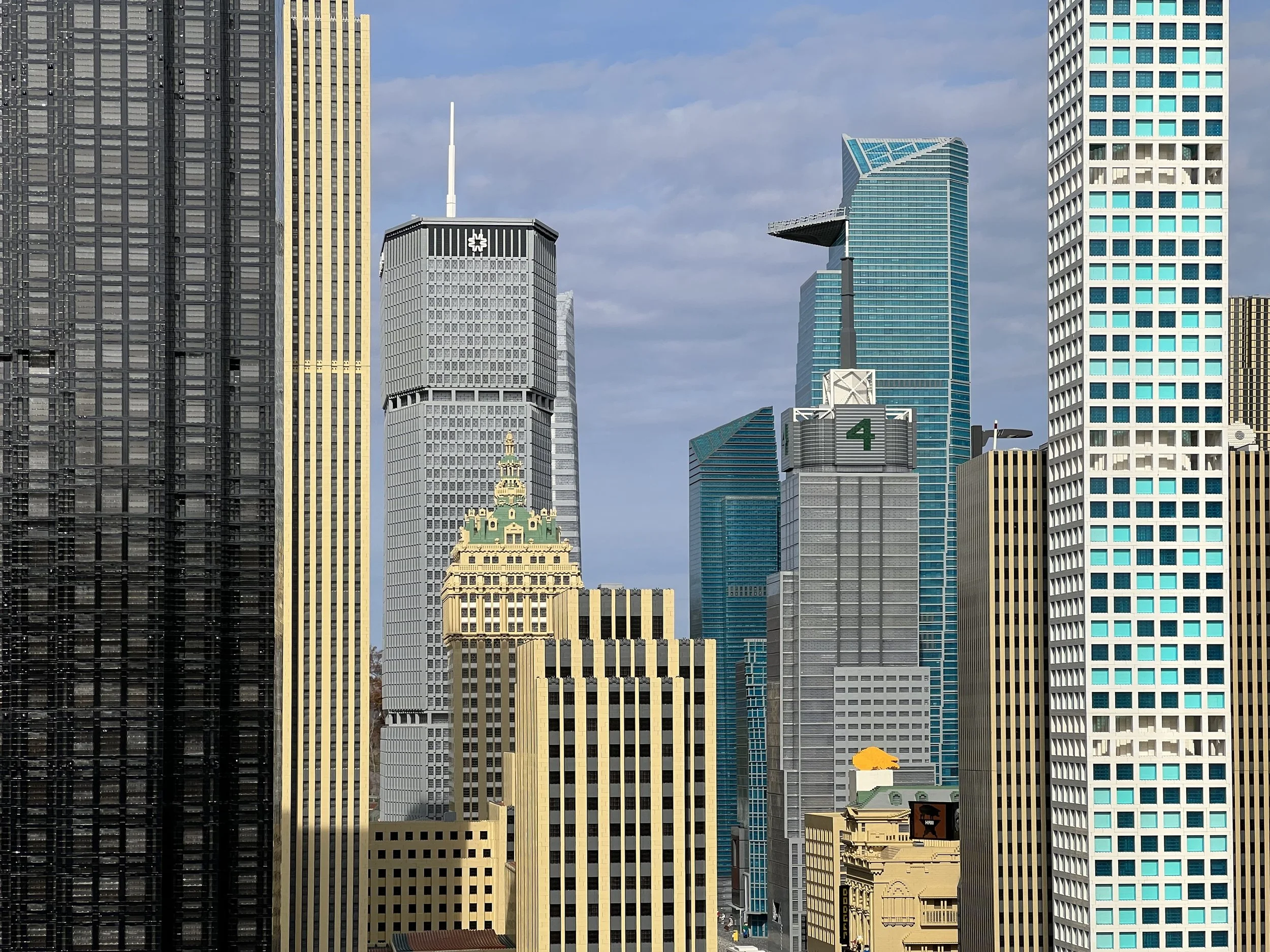
Page 1 of 2
Bronx, New York
No painted trains on the underground, no kids with spray cans jumping over fences
In 2020 I had many plans that were cancelled or postponed, including (but not limited to) timed tickets for KUSAMA: Cosmic Nature, the Yayoi Kusama exhibit at the New York Botanical Gardens. I even joined the gardens as a member so I could reserve my tickets early. Of course the Kusama show was cancelled (or, more accurately, postponed) and it was a whole year later before I made it to the Bronx, which became somewhat of an adventure in and of itself. This was the first time I was back in New York at all and the first time I was even on a train since March 2020. Everything seemed cautiously ok, except for Midtown. I decided to walk from Penn Station to Grand Central (it’s only a 20 minute easy walk after all) and was startled by the emptiness of the place. The crowds had always distracted from the rough edges of the city, and without them, the city felt like it did back when I was a kid, when walking down 42nd Street felt like an accomplishment, and an air of anticipated danger was everywhere.
I have nothing but good things to sat about KUSAMA: Cosmic Nature. There was no installation that I disliked, and the exhibits used the gradens and the conservatory well. Part of this might also be related to my first sense of something returning to normal. To be outside, with people, at a public space, seeing art, even riding New Jersey Transit and Metro North, all felt like coming home. Even in a cold April rain, it was good to be back.
We’re still at KUSAMA: Cosmic Nature, although careful readers may have noticed that the trees in this area of the gardens are a little more filled in. I visited the New York Botanical Gardens twice in 2021 to see the exhibit, with the second visit in August specifically to see Infinity Mirrored Room- Illusion Inside the Heart (2020), which was closed initially due to COVID safety concerns but was now considered to be just fine. Tickets were timed, and visitors had a shockingly small amount of time for themselves to merge with the infinite, but the experience was powerful enough that it made the trip feel worth it.
And while the rest of KUSAMA: Cosmic Nature was the same, the city had changed so much in the time between April 2021 and August 2021. It certainly wasn’t back to its pre-pandemic self, but the city was suddenly less lawless, or if it wasn’t actually less lawless, it certainly felt that way.
So now that it was considered safe not only to ride trains but be by yourself in a small mirrored box, then maybe, just maybe, walking the trenches of World War I might be considered safe as well. This picture is from the World War I section of the Army Heritage Trail at the US Army Heritage and Education Center in Carlisle, Pennsylvania, a free museum and a welcome break from an always hellish drive on I-81. There are lots of exhibits to be seen there, but for me at least, nothing beats walking these trenches and imagining the horrors of early 20th Century mechanized warfare, although a well built, clean, safe, empty trench nowhere near any actual conflict is only part of the picture. Not that I am looking for the rats and maggots, it’s just that the trenches without those things can seem almost pleasant, something I’m fairly certain no World War I soldier ever called the actual trenches on the Western Front.
Another place where no one is looking to see rats and maggots is Hershey’s Chocolate World in nearby (to Carlisle at least) Hershey, Pennsylvania. There you can buy all the best Reece’s Peanut Butter products (they had some really good ones there), smell scented candles that smell like chocolate, and ride the free chocolate tour ride. The ride kind of teaches you how chocolate is made, although really its just an excuse to sit in a ride car in an air conditioned building and not really think too hard as you listed to animatronic cows sing.
If you stay on I-81 south of Hershey and Carlisle, you will quickly learn a few things. The first and most obvious one is that I-81 is absolutely a terrible interstate to drive. It has an excessive amount of slow 18 wheel trucks who like to cut out in front of you and drive slow, coupled with some insane and aggressive drivers who are sick to death of all of the 18 wheelers cutting them off. I’m all for Induced Demand Theory, but I make an exception for I-81 which can use all of the extra lanes that fit in that part of Virginia. Another thing that you will quickly learn is that the Shenandoah Valley can be quite pretty, and it makes you wonder if driving along its ridges would be more fun. The answer to that is yes and no.
Skyline Drive in Shenandoah National Park is beautiful and has no 18 wheelers, but it’s not an easy drive. There are a lot of hills, sharp turns, annoying drivers, occasional construction zones, low speed limits, and large sections where you’re looking at trees instead of views. But fortunately when you happen upon a section with views instead of trees, all of those other annoyances can quickly melt away.
I don’t necessarily need to be somewhere on their opening day (see a contrasting view at “Tornado with human eyes,” Slide 1 of 1, 2021, “Black lungs, headlights, heading out to the city tonight,” Slide 1 of 3, 2020 and “Yeah there’s room at the top, pretty cheap for the view, but the vertical drop made the skyline askew,” Slide 2 of 3, 2020), but circumstances found me in Manhattan with an afternoon to kill on opening day for Little Island, the controversial park designed by Thomas Heatherwick near the High Line and 14th Street. It was packed, but timed entry tickets kept the crowds to a COVID safe level, and after reading about it and watching its construction for so long, I just couldn’t wait to see it in person.
Inside, the two and a half acres (or so) of Little island are wonderfully overdesigned. Every square foot of those acres was thought (or over thought) and it shows. On opening day I did a full walkthrough, up and over hills and lookouts with unique views of the river, the city and Little Island itself at every turn. Everything (except for the overwhelmed and not ready yet food service staff) was perfect as it could be for such a controversial park.
As for that controversy, its one of the stupidest controversies ever. The park was funded by rich guy Barry Diller, who offered the neighborhood a free park, but a community group sued and tried to stop their neighborhood from getting their free park. In the end, the lawsuit was revealed to be paid for by Douglas Durst, another rich guy who it turns out has all sorts of personal issues with initial free park funding rich guy Barry Diller, and little to do with a free park hating community. In the end, the community group ended up losing and getting a free park against their wishes.

